The Rio Blanco rises from a series Andean glacial lakes high in the Aysen region of Patagonia. It’s a river born of ice and rock, and it slices through imposing, tall country before it throws itself into a tight basalt canyon deep in the heart of Chile’s Valdivian rainforest, creating a frothy morasse of nearly impassable rapids and waterfalls that have confounded river runners for decades. Most simply deem the canyon run of the Rio Blanco “unrunnable” and look for friendlier water.
Once it bursts from the canyon out onto the lowlands, the Rio Blanco meets the Rio Aysen and shortly after that the wedded rivers flow into the southern Pacific. Here, the river gets a run of prized king salmon and it’s home to introduced rainbow and brown trout, too. Only it’s easy to get to. And easy to fish.
But the middle Rio Blanco, above the falls and the runs of class V whitewater and a brutal canyon pinch point? For fly fishers, it might be heaven on earth.
The Dream
“You just can’t get up the river,” says Eduardo Barrueto, referring to the rough terrain of the Blanco Valley and the dense jungle that drapes the river’s banks. “People tried. I remember hearing about Swiss kayakers who tried to do it so they could come down in their boats. They gave up. They said it was for crazy people.”
As an obsessive angler and would-be fishing outfitter in the world-renowned trout country around Coyhaique, Chile, Eduardo, along with longtime friend Andy Manstein — the pair met while both guiding at a lodge on Chile’s Paloma River — had his mind’s eye on that inaccessible middle reach of the Rio Blanco for years. Together they’d fished Lago Caro, one of the lakes that serves as the river’s origin, embarking from a house Andy owned on its shores, and probed the upper reaches of the Blanco before torrid whitewater and canyons ended their sojourns. They’d fished the lower river where the salmon run. They’d fished countless miles of water in drainages on every side of the Blanco watershed — all of it world-class, trophy trout water. And in the middle of it all, they knew there were 30-40 river miles of water that was quite possibly untouched, or at least nearly so — something that is a rarity anywhere on the globe, even in sparsely populated Patagonia. In 30 years of fishing the region, they’d never met a single angler that had plied the middle Rio Blanco’s waters.

Get to know Eduardo, and you’ll come to learn that he’s not one to let little things — like dense jungle, ankle-breaking terrain, budgets, bottom lines or common sense — get in the way of a big idea. Still, he’d yet to even lay eyes on the turquoise blue line he’d traced so many times on maps and satellite images. And, even in his daydreams, short of an incredibly expensive fly-in lodge that would have been cost prohibitive to construct and available only to the uber-rich who can order up helicopter rides without breaking a sweat, he couldn’t figure out how anyone could make it work.
More Like This
So he turned his attention elsewhere. In 2010, he and his family constructed what is now the wildly popular Magic Waters Lodge. Twice expanded in the years since, the lodge sits perched atop a bluff overlooking a diminutive but beautiful Andean lake in the pastoral Patagonia countryside. From Magic Waters, anglers from all over the world chase trophy brown and rainbow trout amid the stunning landscapes of Chilean Patagonia.
With ready access to high-mountain meadow streams, gurgling spring creeks, classic freestone streams like the Simpson and the canyon-clad Mogoté, and even rainforest rivers like the Rio Paloma, Eduardo is able to offer a staggering amount of angling variety to far-flung fly fishers. As he will unapologetically say, “There’s nowhere else quite like this place.”

An elusive plan
But Rio Blanco still beckoned. He put feelers out, searching for anyone who might know a route over the mountains where he could reach the river and see if it fished as well as he suspected it would.
At a friend’s house, a chance meeting with a topographer that was surveying land within the valley connected Eduardo with Jorge Martel Martinez, a gaucho who was born and raised in the Blanco valley and who lives along the middle river’s lowest reaches where he runs a team of horses and a herd of cattle in the nearby mountains. His family once owned much of the land along the river, including some parcels within that elusive middle stretch of river that continued to haunt Eduardo’s dreams.
For generations, the Martinez family and others who owned land along the middle Rio Blanco have run livestock in the area. But the landscape is foreboding and steep. The thick rainforest jungle offers just enough browse for cattle, but it’s hardly a prolific cow-calf operation.
“They’ve done it for a long time,” Eduardo says, “Jorge takes care of the cattle, and it’s very difficult.”

Steep slopes, thick, impassable beech forests and slick-as-snot mud during the wet season make any livestock endeavor a logistical challenge. So do the predators that lurk in those woods.
“There are just too many puma and foxes,” Eduardo says. “That’s why they don’t run sheep. The puma just feast on them.”
But Jorge had a plan for Eduardo’s vision.
“He told me to bring a raft and a motor, and he would tie them to his horses and take them over the livestock trail into the river,” Eduardo says, laughing now at the impossible task Jorge was suggesting at the time. It was early spring in Patagonia, and even if they got to the river, there was no guarantee that the fishing would be any good. “I thought it was a crazy idea.”
The trail, such as it was, was already in place thanks to the cows that roam the meadows above the falls. After traversing the mountains, Jorge explained to Eduardo, they would follow a rocky, muddy, overgrown creek bed down to the river and come out just a bit above the impassable string of rapids and falls. Sometimes the creek runs, Jorge said. Sometimes it doesn’t.
![Motoring up the Blanco River [left], streamside lunch on Rio Blanco [top right], Andy Manstein and Eduardo Barrueto with a nice Blanco River brown trout [bottom right]. Photos: Earl Harper, Chad Shmukler, Uncredited. various images from the river of dreams basecamp](https://www.hatchmag.com/sites/default/files/styles/preload/public/styles/full-page/public/field/image/mpip-spread-2.jpg?itok=6DqNCtDj)
The gaucho and his packstring proved to be a remarkable team. Jorge led the horses over the mountains strapped with the vinyl raft, a 30-horsepower motor, fuel and other supplies. But the raft frame’s 16-foot sidebars were far too long to go in on the horses.
“So he carried them in by foot,” Eduardo marvels.
In time, Jorge, Eduardo and Andy all made it to the river. Jorge’s horses picked their way along mud-slicked granite and basalt and through thick, black, murky mud pots that tickled their bellies. The sound of iron slipping on wet rock still gives Eduardo a bit of anxiety to this day.
“I’m not going to lie,” Eduardo says with a sheepish grin on his face. “I wasn’t sure we were going to make it, and when we did, there was a lot of relief. And to see the river in front of us … that was incredible.”
An idea becomes reality
Recounting that first day he, Jorge and Andy spent motoring up and down the pristine river, Eduardo describes the fishing as the stuff of legend. Big browns lying under complex woody debris eagerly followed streamers cast tight to the banks. On subsequent visits into the spring and summer, as the trio started to earnestly plan a basecamp along this once unreachable river, dry flies and mouse patterns proved absolutely deadly. And, the more they explored, the better it got.
What at first was a plan to construct a simple, portable tent camp along the river for Eduardo’s clients turned into an ambitious project. In addition to confirming that the Rio Blanco was indeed a trout-fishing nirvana, the trio also “found” a pair of very productive spring creeks, each one home to massive brown trout, and one clearwater tributary where a population of spirited rainbows lurks. They identified the ideal location for a would-be trout camp, situated just upstream of the most productive spring creek along the river, which Eduardo has since dubbed Paradise Spring Creek. There, they found a verdant meadow that provided fairly level ground and a gravel beach ideal for the cata-rafts Eduardo was fond of using on the rivers he and his guides fished from Magic Waters.


Everything was falling into place. And, as helpful as Jorge had been in helping Eduardo and Andy get into the river, he proved even more helpful in the months ahead. Through contacts Jorge established, Eduardo was able to negotiate the purchase of the land that was to be his eventual trout camp from one of the families that was tired of trying to make a livestock operation in the Blanco valley work. And Jorge was able to turn a pioneered path up and over the mountains into a legitimate trail, albeit one that still delivers exhilarating rides into the wild.
Today, the camp is a bustling weekly fishing operation over the course of a six-month season. And it’s become a compound of sorts, with vinyl-roofed cabins, a fully-plumbed shower and bathroom complex, a dining hall, a kitchen, guide cabins and even a bar — all the structures the brainchild of Andy’s designs. The vast majority of the pieces and parts, including a modest armada of cata-rafts and outboard jet motors, arrived at the camp thanks to Jorge and his string of indestructible horses. Even things like generators and smaller kitchen appliances made their way into the backcountry atop Jorge’s sure-footed beasts.
Larger items, like freezers, refrigerators and ovens, were delivered at no small expense by helicopter. But, for the most part, the fishing camp exists today thanks to one Chilean gaucho and his team of horses.
The River of Dreams
We arrived at Jorge’s modest ranch at the base of the mountains early one morning, transferring over from Magic Waters Lodge, where we’d spent a week enjoying some of the best trout fishing in Chile. It was full-on spring in Patagonia, and the lupine was growing bright and tall. Calafate bushes sported bright yellow flowers that defied their thorny souls that, with a little effort, can turn coiled fly line to a rat's nest. The season at the fittingly named River of Dreams Basecamp was in full swing.
We watched as gear for six anglers — max capacity at the camp at any one time — went from the beds of trucks and the bellies of Land Rovers to the backs of horses with machine-like efficiency. By this time, the camp had been running for three years, minus the lost season thanks to COVID. In less than 30 minutes, we went from spectators of a special-forces-like packing and preparation endeavor to passengers aboard Jorge’s sturdy horses.

Even then, three years into a fully-operating basecamp on a remote Patagonia river, it was easy to see why it took Eduardo so long to make his dream come true. The route, in some places, was downright vertical. In others, it was impossibly muddy. Still others required the horses to become part mountain goat and leap from boulder to boulder in order to descend into the valley, where a host of boats waited to take us up the river to the camp. It boggles the mind to think that, for Jorge and his team of horses, this is but another leg on their journey — one they’ll take several times a week.
“We bring everything in. Gas, propane, kerosene, all the food. We can’t have sheep up there because of the pumas, so we have to bring in all the meat, all the wine. And that’s all Jorge. He makes it work. It’s not an easy life,” Eduardo says. “But he loves it and he loves the horses.”
The Blanco’s massive browns were eager mouse-eaters, and while at first it became something of a novelty, by the end of the week at River of Dreams, we were defiantly tying on our last chewed-up mouse patterns, foregoing the streamers that worked just as well or even better. The thrill of watching a fish pushing two feet long move after a skated concoction of black foam, grizzly hackle and rabbit fur is unmatched in the trout-fishing realm.

Eduardo, rightly so, puffs up a bit with pride when he talks about the camp and what it has become. And he smiles when he talks about Jorge and all that he does. There’s no small amount of affection between the two. Together with Andy, they made one of the world’s best trout-fishing destinations — once merely a dream — a reality.
“I’m really grateful for Jorge,” Eduardo says. “Without him, there is no River of Dreams.”
IF YOU GO
Getting There
Anglers headed to fish the Rio Blanco and Paradise Spring Creek fly to Balmaceda, Chile via the nation’s capital, Santiago. Most fly fishers then take a scenic drive through the Simpson River valley to an outpost on the lower river where they are carried on horseback over the mountains and into the Blanco River valley. From there, a jet boat ride upriver gives anglers an first glimpse at about half of the Blanco’s 30 river miles that they’ll fish during the week.
These days, convenient and reliable helicopter transport is also available for anglers looking to shorten their journey or uninterested in making the horseback ride into camp.
When To Go
The season on Rio Blanco begins in late October and continues through early May. The river fishes well throughout the entire season, with weather playing a bigger role than seasonality. The spring months of October, November and early December offer stable water levels and shots at voracious fish that haven’t seen flies in six months. During the summer months — December, January and February — the river takes on a slight glacial hue due to meltwaters stemming from the glaciers that give life to the Blanco, providing cover for some of the river’s biggest and burliest brown trout and making them increasingly willing to chase down big meals. Come autumn, in March, April and early May, streamer fishing hits its apex on the big river, as fish that have fattened up all summer on the river’s bounty enter aggressive, pre-spawn mode.
Choosing an Outfitter
The easiest part of the journey to Rio Blanco is choosing an outfitter. With sole access to 30 miles of the Rio Blanco’s middle reaches — available to a mere six anglers per week — the River of Dreams Basecamp is the only show in town.




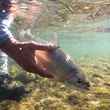
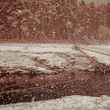
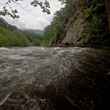
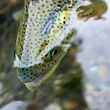
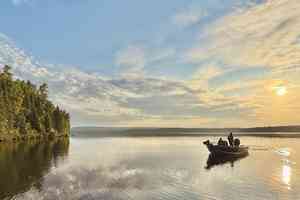


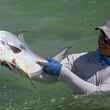

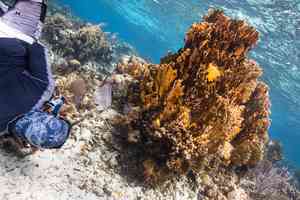

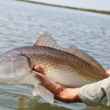
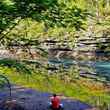




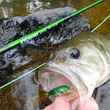
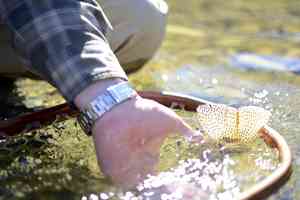
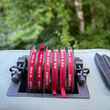

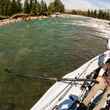
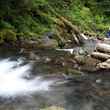
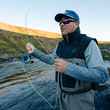
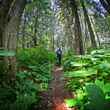
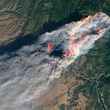
Comments
Ron Romeis replied on Permalink
Eduardo and everyone at Magic Waters will make this a trip of a lifetime. Grateful that I was able to experience it with my daughter and friend Tim Romano!
Pages